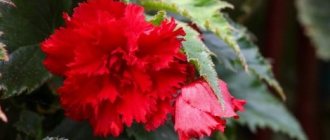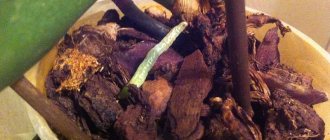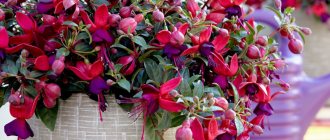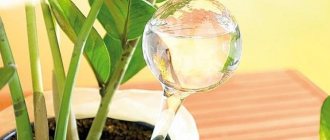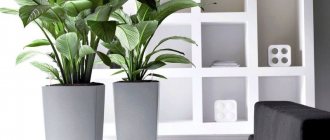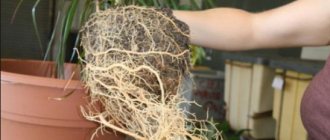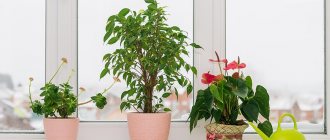Once very popular under the name of indoor nettle, and then forgotten by everyone, coleus today is one of the most colorful garden and indoor plants. At least among pilots. It is not for nothing that they are considered stars of the first magnitude for those who are primarily looking for non-standard colors. Easy to grow, but not so undemanding as to suit everyone, coleus require constant supervision and very quickly lose their decorative value. But if you take care of them, bushes made of velvety unique leaves will easily outshine any competitor.
Return of indoor coleus, or New life of decorative nettles
Coleus - description of the plant
The fact that coleus belongs to decorative foliage plants is undeniable. Bright and beautiful, bold and wonderfully textured, they have been transformed into modern stars thanks to the development of hundreds of original varieties.
Coleus, which were once so boring that they completely disappeared from window sills, are no longer those pink-leaved, dark-edged, bulky and deformed house favorites. These are modern, fashionable and surprisingly adaptable stars.
Understanding the names of coleus plants is not always easy. The plants continue to be sold and bred under this old name - Coleus . And in common parlance, coleus continues to be called simply nettle or decorative nettle . According to botanical classifications, Coleus have long been transferred to the genus Plectranthus, and before that they were classified as Solenostemons for quite a long time. One way or another, despite the “legitimate” botanical name and belonging to the genus Plectranthus , coleus remain very easily recognizable plants.
Coleus belong to the Lamiaceae family. In nature, they are very widespread, found mainly in lowland areas, but only within the tropical climate. The largest representation of coleus is characteristic of Asia and Africa; they are considered quite rare plants on both American continents. Coleus are able to successfully conquer territories and fill entire clearings.
Hybrid coleus (Plectranthus scutellarioides) - varietal coleus obtained through crossing - are usually much more compact and densely leafy than the original species. But they still remain the same unrestrained, fast-growing, control-demanding coleus that needs constant care.
Compact, densely branched or more splayed and elongated plants always form fairly powerful bushes with long, usually tetrahedral, succulent shoots, densely branched and easily controlled by pruning. The height of coleus directly depends on how the plants are formed and what are the characteristics of the variety. Among coleus there are dwarf varieties with a height of 10 to 30 cm, and giants above 1 m in height.
Today, all types of coleus are united under a single species of plectranthus - Plectranthus scutellarioides. © Bob Bales
Leaves, colors and flowering of coleus
Coleus captivates with its oval, heart-shaped or ovoid, medium-sized leaves with a beautiful wavy edge, a unique velvety texture and the obligatory variegated color. The teeth and cuts along the edges of coleus leaves always surprise with their unique symmetry and neatness. Despite the differences in shape between varieties, coleus are still very similar to nettles.
The color palette of coleus can include all shades of the color spectrum, usually in contrasting combinations. Green and red of various tones remain dominant among coleus. But white, yellow, pink, lilac, orange, brown patterns and almost black color variations bring the palette to an unimaginably rich one.
The patterns on coleus leaves can be either symmetrical or completely chaotic. There are varieties with strict spots and edges that repeat the shape of the leaf itself, and there are also varieties with different stripes, speckles, and spots that create colorful chaos. Some coleus have patterns that are almost identical on all leaves, while others may vary on each leaf.
Despite the fact that coleus blooms actively and en masse, it is not considered a decorative characteristic. Slightly reminiscent of the inflorescences of the jasmine, the rare apical spikelets of coleus with small spongy flowers of blue tones do not decorate the plant. Flowering begins with deformation of the bushes, they stretch out, the leaves partially lose their colors, the internodes lengthen, the whole bush seems to fall apart.
Flowering of coleus occurs actively and en masse, but it is not considered a decorative characteristic. © Galina Timchenko
Types of indoor coleus
It is very difficult to find species of coleus or even old varieties today. They have changed over the past decades. And new selections, surprising primarily with their colors, have completely changed the idea of this plant.
Many crops that combine garden and indoor use have a clear division into types that can be used either in interiors or in landscape design. But coleus are absolutely universal: any variety is suitable for both open soil and potted culture.
Many people know (previously considered separately) the names of the species of coleus - Coleus Renalta , Bloom , hybrid. But all of them have long been reclassified and united under a single species of plectranthus - Plectranthus scutellarioides, outdated synonyms - Coleus blumeii, Coleus rehneltianus. This name must be indicated in the detailed information about the plant.
Despite the fact that all coleus have the same name, the plants are still distinguished into several groups according to their growth form:
- Ampelous coleuses are beautiful varieties with unstable, hanging, flexible shoots and fairly large leaves of a typical “nettle” shape. The base plant is easily recognized by its brownish-rusty, velvety color with a red tint, emphasized by a green border.
- Bush coleuses - the vast majority of modern varieties, low-, medium- and tall-growing coleuses, which are easily recognized by their tetrahedral, densely branched, succulent shoots and jagged edges, heart-lanceolate leaves. On their surface, zones, stripes and edges contrast with combinations of white, green, orange and red shades of the spectrum, the beauty of which is emphasized by the velvet edge of the surface.
It is always better to choose coleus according to the desired height and color, to suit your taste. The legendary variety mixtures “Wizard” and “Rainbow” became famous for their variegated, unusual two-color variations and luminous veins or watercolor color transitions.
There are also beautiful series with twisted leaves, cut in half, like “Fantasy” , and individual varieties with extravagant shades that evoke a variety of associations. Pay attention to differences in edge shape and foliage density.
Ampelous Coleus Wisley Tapestry. © suvorova
Growing conditions for indoor coleus
Unassuming, popular, colorful, and able to grow in almost any warm environment, coleus are plants that are familiar and easy to control. But to think that they will be content with literally any place would be a big mistake.
Coleus are much more tolerant of temperatures, but require strict selection of lighting. And control over conditions allows plants to remain decorative longer and reduces the need for rejuvenation.
Despite the status of a universal and popular plant, coleus require caution: they are also among the poisonous crops, and working with coleus, as well as placing them in a house with small children or pets, must be done with caution.
Lighting and placement
The luxurious colors of coleus themselves signal that this crop is not one of the shade-tolerant ones. In order for all the shades and patterns to appear fully, coleus plants need bright lighting. At the same time, direct sunlight in summer leaves visible burns on the leaves, and diffused light always remains an ideal option for coleus.
When choosing a place for this plant in the interior and not on the windowsill, you should focus on the signals that the coleus itself gives. In uncomfortably low light, coleus not only changes color shades on young leaves, but also slows down its growth, begins to stretch, and its internodes lengthen. Therefore, finding the maximum possible distance from windows, taking into account these plant signals, is not so difficult.
New varieties of coleus are often advertised as shade-tolerant, but you should not experiment with placement even in partial shade until you are convinced of the normal development of the plants: coleus were and remain light-loving plants, capable of growing in a bright or sunny place.
When choosing a place for coleus, you should first of all pay attention to rooms for which frequent ventilation is natural. Coleus also grow well in living rooms, but the living room, kitchen, winter gardens, and the area at the entrance to the house are much better suited for them and will make their care much easier. But even in living rooms, coleus will feel great with proper care.
Coleus are not soloists. It is no coincidence that several copies of this plant are often planted in one pot: in groups, coleus plants are transformed. They are not afraid of the proximity of other plants. But if it is possible to combine different varieties and colors with each other and create different compositions from coleus, their extraordinary beauty will appear in all its splendor.
Coleus can be used to decorate floor flower boxes and dividers, and to introduce large containers with plant compositions into the interior.
Coleus are ideal for balcony gardening
Temperature and ventilation
Coleus are considered one of the most adaptable houseplants and should thrive in any home or office space. Cool and moderate room temperatures are perfect for the plant. But coleus do not like heat, it is extremely difficult to compensate for it. The plant does not lose the attractiveness of its leaves only at high air humidity or in the fresh air.
Coleus in the warm season will prefer to grow at temperatures from 16 to 24 degrees. Increasing the temperature to 25 degrees requires appropriate measures if you want to maintain the impeccable appearance of the coleus.
Coleus will prefer to spend the rest period in a cool place. The optimal temperature is about 15 degrees. But it can be lowered to 12 degrees Celsius. For coleus, which grow in the soil all summer or spend the entire summer in the garden as potted plants, the wintering temperature is somewhat lower - about 10 degrees. Indicators above 18 degrees usually lead to strong elongation of shoots and loss of shape, but the plant recovers well after pruning in early spring.
Coleus can overwinter normally in a warm room.
In the summer, all coleus can be taken out into the fresh air. They feel great on balconies, terraces, and in the garden. You can use the plants as regular potted plants or transfer them to flower beds. Coleus are dug in and transplanted into open soil. At the same time, coleus thrive in the open air even in sunny areas: access to fresh air compensates for the intensity of lighting for them.
To be highly decorative, coleus need to be provided with sufficient lighting.
Watering and humidity
Do not forget that coleus loves abundant watering not only in spring and summer, but also in winter, on a warm, sunny windowsill in a dry room, you need to make sure that the soil in the pot does not dry out. But if coleus is watered abundantly in light and warm conditions, then in cool conditions and darkened rooms, watering is halved. Temporary drought will cause less harm than excess moisture! When a plant wants to drink, its leaves droop. In addition, at high temperatures the flower likes to be sprayed. But you shouldn’t wipe the velvet leaves. In spring and summer, you can feed coleus with fertilizers once every 2-3 weeks, although watering and sunlight are sufficient for the normal development of the plant.
This may be interesting: Croton (codiaum) - home care
Caring for coleus at home
It is no coincidence that the unpretentiousness of coleus plants has become legendary. They are so popular today as an alternative to conventional annuals in gardens due to their unpretentiousness and hardiness. But, if in gardens coleus do not require containment and can grow to their full extent, in indoor culture they will still need much more careful care.
Uniform substrate moisture is the main secret in growing coleus. And the main efforts to care for this plant are aimed specifically at watering. But you cannot achieve high decorativeness from coleus even without one more point of care - shaping.
Watering and air humidity
In order for “nettle” to become the star of your interior, you need to create the most stable conditions for the plant and keep the substrate equally moist. Coleus are afraid of both dampness and drought almost equally. For them, watering should be moderate, but frequent and even.
When watering the plant, you should allow the top layer of soil to dry out on 3-5 cm of the substrate, but no more. When watering a plant, it is better to dose the amount of water and drain the excess from the trays immediately.
You need to be careful when watering coleus. Especially when it comes to overgrown, dense and low bushes. The greenery of the plant should not get wet, and water should not even get on the stems. Coleus prefer watering with soft water. Its temperature should correspond to the air temperature in the room.
Coleus, despite belonging to pubescent plants, are afraid of any wetness of the leaves and do not tolerate spraying even in the most careful form. But high humidity is desirable for them. The beauty of the velvet texture of the leaves, and all the richness of colors, and the rapid growth rate of coleus are fully revealed only when the air humidity is not lower than 50%.
Coleus can survive and even remain decorative and compact in dry air, but the difference in colors and textures will be striking.
Coleus are afraid of both dampness and drought almost equally. © Fleurette Jardin
Top dressing and fertilizer composition
Despite the very bright colors of the leaves, coleus does not at all belong to plants that need frequent and generous feeding. It is better for them to fertilize at a classic frequency. Excess fertilizer does not benefit the leaves: plants grow too quickly, become deformed, and often lose color. You need to be especially careful with excess nitrogen.
The ideal frequency of fertilizing for coleus is rightly called once every 2-3 weeks.
When choosing fertilizers for coleus, it is better to choose a balanced all-purpose fertilizer or a special fertilizer for brightly leafed crops. For this crop, you can alternate mineral and organic fertilizing, but in this case it is better to increase the frequency of these procedures to 8-10 days.
Unlike many houseplants, coleus grows well with any type of long-lasting fertilizer. It is advisable to choose granules or sticks intended for decorative foliage crops. When using long-acting fertilizers, you should strictly adhere to the manufacturer's recommendations.
Pruning and shaping coleus
The rapid growth of coleus and the tendency of shoots to increase primarily in height require vigilant care. Coleus can maintain compactness and develop in the form of dense, dense bushes only with constant formation. It is better to start it on young plants, regularly pinching the tops, trimming the bushes to thicken them and limit their size.
Coleus tolerate even heavy pruning, but the main tools for forming this crop remain pinching and removing the tops of elongated shoots. Such regular procedures on each new shoot and branch after releasing 3–5 pairs of leaves allow you to maintain coleus in shape, controlling the height, density and size of the plants.
Removing flower stalks is mandatory for all coleus. To prevent deformation of the bushes, stretching, and loss of leaf density, it is better to break off or pinch off flower stalks before they are fully formed. The more flower stalks are allowed to develop, the more flowering affects the decorativeness of plants. If you plan to collect your own seeds, then you should not leave more than 2 inflorescences on the coleus.
To rejuvenate and renew coleus, you can use the radical pruning method. Plants are cut literally down to the stumps, stimulating complete renewal of the above-ground parts.
Coleus can be tied up and formed on supports.
Coleus plants can maintain the compactness of dense bushes only with constant formation. © Ann Stretton
Transplantation, containers and substrate
Coleus are traditionally replanted annually in early spring. It is believed that it is better to renew or replace coleus annually, but if formed, they can last several seasons. If the bush does not completely master the substrate, then even with radical pruning it is better not to replant until absolutely necessary.
Coleus can be content with any high-quality substrate. They love nutritious, light and pH-neutral soil. For coleus, you can choose a ready-made commercial substrate for both universal use and for decorative foliage plants. Or you can mix the soil yourself.
The standard soil mixture for coleus is considered to be a substrate consisting of leaf, turf soil, humus, peat and sand in a ratio of 4:4:2:1:1, but any loose nutritious soil mixture that is not prone to compaction is also suitable.
Standard containers or wide bowls when planted in groups are suitable for coleus. The containers should not be too large; they should be increased by several centimeters compared to the previous pot. When transplanting, laying drainage is required. The depth of coleus remains the same.
Diseases and pests
Coleus gets sick quite rarely, but sometimes it is still susceptible to various diseases.
It happens that the leaves of the plant begin to turn pale and discolored. Most often this happens from a lack of sunlight, but when a young flower that is not accustomed to light comes under direct sunlight, it can get burned; its leaves wither and become faded. Adjust the lighting mode and everything will return to normal.
Coleus got burns
It happens that brown spots appear on the leaves - most likely the air in the room is very dry and frequent spraying of the plant is required. In addition, you can place a container with wet expanded clay or sand near the pot.
This may be interesting: Peperomia - secrets of growing at home
Why do coleus leaves fall? It happens that coleus sheds its leaves before autumn. It may be lacking nutrients. Feed the plant with special fertilizers, and in the spring it will grow again.
Sometimes the flower grows very tall. Most often this happens in winter due to lack of sunlight. The shoots become bare, become long and thin, and as a result the plant loses its decorative effect. To preserve coleus in winter, regular pinching of the tops and additional lighting are recommended. In February, it is recommended to cut the coleus into a stump, leaving 5-6 eyes for new growth. If coleus is grown as a perennial, then every 2-3 years it is transplanted into larger pots with good drainage.
It happens that pests appear on coleus. More often it is a whitefly, aphid or spider mite. The diseased flower must be urgently isolated from the rest and treated with an appropriate insecticide.
Diseases, pests and problems in growing coleus
For coleus, problems often arise due to improper wintering or improper lighting. Pulling, dropping leaves, deformation, exposing the lower part of the shoots, falling apart are typical problems. Diseases among coleus, with the exception of rot in constantly damp soil, are rare. Of the pests, the only pests that threaten the plant are whiteflies and spider mites.
Coleus propagate very easily from cuttings. © mpmarsee
Coleus propagation
Coleus propagate very easily. To fully preserve the characteristics of the variety, it is worth choosing vegetative methods - cuttings. It can be carried out throughout the spring, during active growth, from February to June.
For cuttings from coleus, the tips of the shoots, rather than the segments, are used. Typically, old coleus plants are rejuvenated using this method, by re-rooting the top and thus renewing the plant. Coleus shoots take root not only in the soil, but also in water or sand. For this plant there is no need to arrange a shelter under a hood or film. On average, it takes about a week for standard coleus cuttings from 8 to 10 cm long to root.
Coleus seed mixtures produce bright and colorful, unexpected results. Pure varieties of coleus are sold very rarely, but variety mixtures demonstrate excellent germination and bright surprises.
Sowing is carried out according to the standard scheme for garden summers - in shallow containers, universal soil, lightly sprinkling the seeds with soil. For coleus, it is better to sow several seeds per hole, but the usual scheme is also suitable.
Light soil moisture, warmth, cover with glass and a cap - all that is needed for the rapid emergence of seedlings. Coleus need to be cared for carefully; they are afraid of getting wet and require stable, light humidity. Shoots sprout after the appearance of the second pair of leaves, several plants per pot.
Can I keep it at home?
In the photo: Coleus / Coleus Henna
Before giving advice on caring for coleus at home, we decided to write about whether it is possible to keep this flower at home.
According to Feng Shui
Ancient Chinese teachings advise placing coleus in a corner where negative energy usually circulates. Its leaves will take it upon themselves.
In the northeastern part of an apartment or house, according to Feng Shui, the energy of wisdom and knowledge accumulates. This is where it is recommended to place a pot with a house plant.
Opinion of esotericists
It is believed that growing coleus at home gives only positive results. But it's best to put it:
- in the kitchen, where he will clean the energy;
- in the bedroom so that your sleep becomes good and your dreams become good;
- in the hallway to recognize envious and evil people (after visiting them, the leaves of the nettle begin to fade).
Esotericists claim that if a plant’s leaves suddenly begin to fade, it means there is a lot of bad energy in the house. The home needs to be cleaned urgently, otherwise soon one of the household members will get sick.
Folk signs and superstitions
Coleus is credited with both positive and negative properties for the home:
- The flower will “drive” envious people out of the home and protect household members from the evil eye.
- Drives out wealth - such a sign from the distant past, when rich people could afford to decorate their premises with expensive flowers, and the poor only with nettles.
- In the office, coleus is a money magnet.
- The plant attracts diseases and problems. At the same time, according to other signs, his withering indicates that there is a lot of negative energy in the house, which is why someone in the family may get sick.
- Muzhegon. They claim that this opinion is erroneous, since in fact the nettle is a fly-driver (drives away insects), but someone misheard and began to think that the flower is a fly-driver.
- Because of its beautiful bright leaves, for some reason nettle began to be considered a “fire hazard”. Maybe because the leaves of some varieties resemble flames from afar?
You will be interested to know: Myrtle: care at home, photo of a houseplant, signs
Whether or not to keep a coleus flower in the house is up to everyone to decide for themselves. But it clearly has more positive qualities, because with its beauty the plant can decorate any room, and in the summer - a summer cottage.


